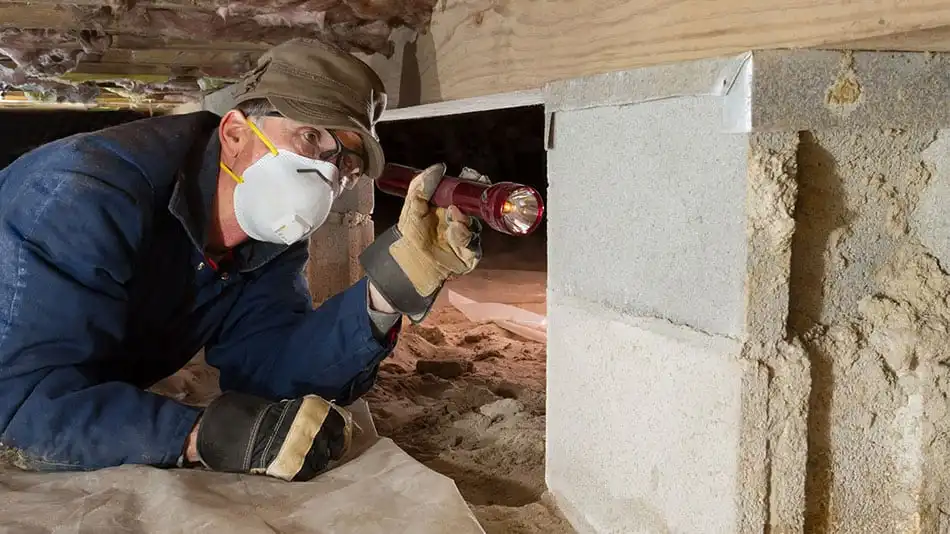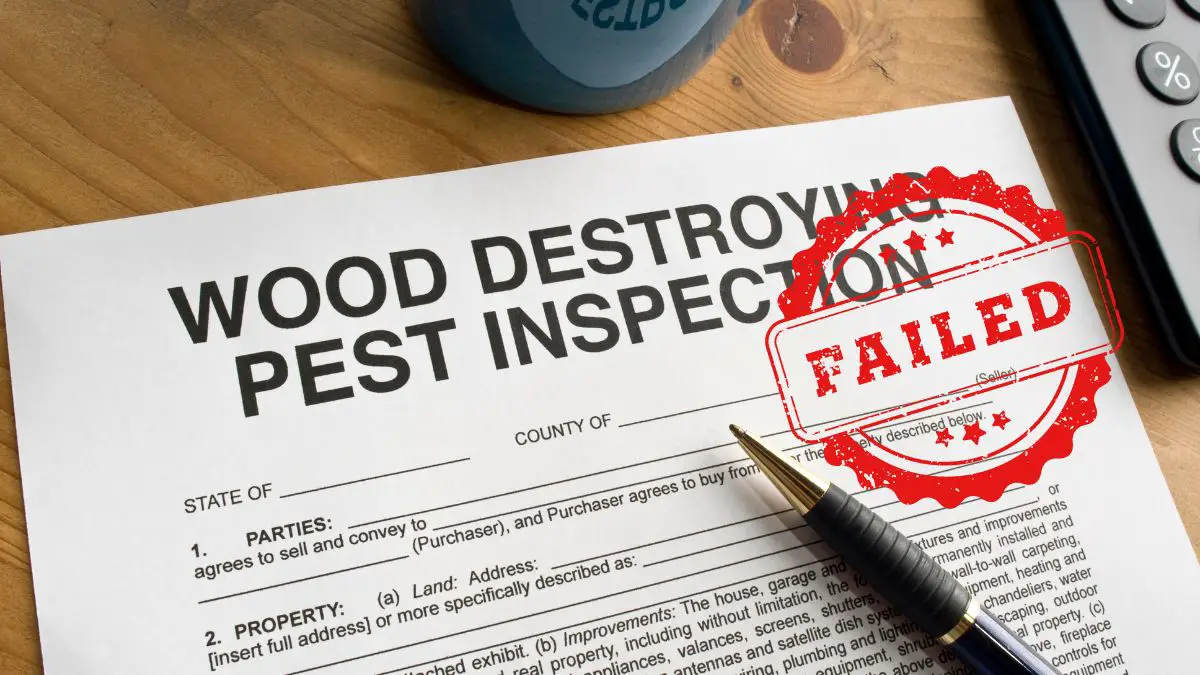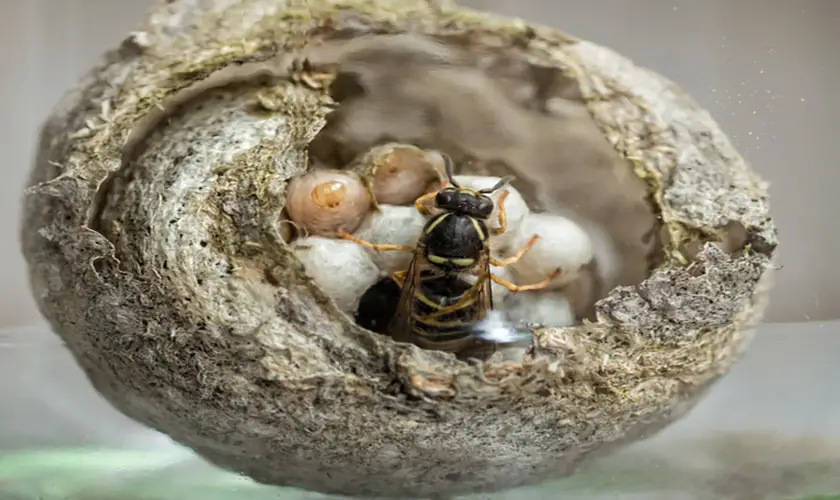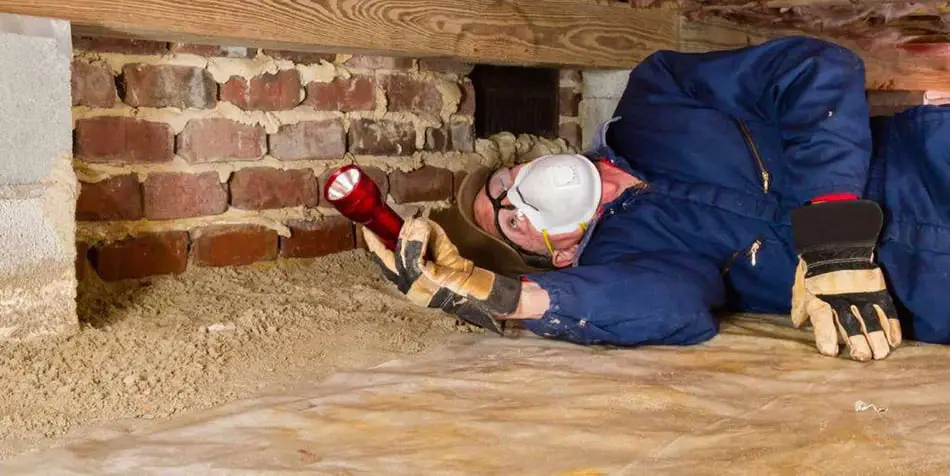
They hate the light. They are active at night. And they feed on the blood of humans. No, not vampires. Bed bugs! An authentic, offensive, and persistent problem that many people around the world face. If you have a bed bug problem, you are doing all the research possible and may wonder how to eliminate these pesky bugs permanently.
Wash bedclothes, pillows, stuffed toys, mats, clothes, curtains, and cushions on high heat. Then put these items in a hot dryer for 30 minutes. Throw out items where possible. Seal the other items in plastic bags for five months or freeze the bags for four days—vacuum and steam the bed, furniture, and carpet. Isolate the bed from the walls and floor. Treat the furniture and room with appropriate pesticides and put the mattress and box spring into bedbug-proof covers for a year.
It is challenging to get rid of bed bugs permanently. Difficult, but not impossible. You will need both patience and persistence in your pest control endeavors. This article intends to provide adequate information to rid yourself of these blood-thirsty, albeit tiny beasts.
Get FREE quotes from licensed pest control technicians in your area today. Whether you need spraying for ants, roaches, spiders, ticks, mosquitos, or bed bugs, We Can Help! All technicians are screened, licensed, and insured.
Identifying Bed Bugs
Unfortunately, bed bugs are not the only pests you may discover on your bed and in your room. Carpet beetles feed on your clothing, often closely associated with your bedroom. Ticks are another common pest that can find their way onto your bed.
Like bed bugs, ticks are attracted to emissions of CO2 produced by viable hosts. Ticks are especially a problem if you live in certain areas, spend a lot of time outside, or have pets. So, what do bed bugs look like?
The two main types of bed bugs responsible for our homes’ infestations are the common bed bug (Cimex lectularius) and the tropical bed bug (Cimex hemipterus). These species look relatively similar.
Bed bugs have a similar size and shape to an apple seed in size. Thus, the adults are approximately 4-5 mm and have rounded but flat abdomens that taper toward their small heads. A bed bug’s exoskeleton is reddish-brown, with a banded look on their abdomens.
As with all insects, they have six legs. These legs are also reddish-brown and grouped tightly on their thorax. Bed bugs have no wings, so they cannot fly. They have no wings for flight, but they are fast runners and can scurry up walls and ceilings to find the perfect place to hide from you.
How To Confirm That You Have A Bed Bug Problem
There are two main factors required for confirmation of a bed bug infestation. The first is waking up with itchy red dots on your skin. The second is finding a bed bug.
If You Have Red Dots On Your Skin, You May Have Bed Bugs
Far too many creeping and crawling creatures in the world can bite us while we sleep and cause red dots to appear on our skin. As a result, finding red dots on your skin in the morning does not guarantee that you have a bed bug problem, and diagnosing a bed bug infestation also requires finding the actual bugs. However, if you wake up with itchy red dots on your body, you should start looking for bed bugs.
Bed bugs cause these red dots by piecing your skin and sucking your blood through their elongated mouth structures. They release an anticoagulant into the feeding site to allow them to feed until they are engorged. Bed bugs will run and hide once they have finished feeding, which only takes a few minutes, so you won’t often find them on your skin. These dots may develop into highly itchy welts depending on your particular sensitivity.
If You Find A Bed Bug, You Have Bed Bugs
It may seem obvious that you will know you have bed bugs if you see a bed bug. But these pests are good at hiding, so people often only find them when they start looking. And they usually only start looking when they notice they are being bitten by something at night.
Bed bugs find a dark place to gather with other bed bugs and hide while not feeding. Such hiding places are not only on your bed. They will often hide under labels, seams, or between your mattress and box spring or bed frame on your bed. You must carefully and closely check your mattress, box spring, and bedclothes.
Other places to search include:
- Behind any wall paintings
- Cracks in the baseboards, floors, walls, and furniture
- Flaps of wallpaper
- In between seems of your chairs and furniture
- Between your wall and the ceiling (there will be a black dot)
- Electrical outlets, etc.
Even if you don’t want to or can’t afford to hire a professional exterminator to eradicate your bed bug problem, you can ask them for an initial consultation to confirm that you have bed bugs. They can then come to your house, look in all the known hiding places for you, and ensure that the bugs found are bed bugs.
Further Proof Of Bed Bugs
There are other smaller ways to confirm that bed bugs have invaded your room. You may find small blood stains on the bedclothes where your skin has touched right after the bed bugs have fed. You may find slightly larger bloodstains if you have squashed a bed bug recently fed.
You may find tiny dark spots on your bedclothes (especially easy to see on light bedclothes). This is bed bug fecal matter. Bed bugs live close to their host, so you may also find the pale shells from maturing nymphs or small white eggs.
Getting Rid Of Bed Bugs On Your Bed
Probably your biggest concern is being able to sleep without fear that bed bugs will feast on your lifeblood. You may be tempted to abandon the room altogether, but unless you quickly treat the problem, the bed bugs will follow you around the house. They are not attracted to your bed or your room; they are attracted to you.
Another temptation may be to throw away your mattress, but this is not a good solution. It is also expensive. Unless you treat the wider bed bug problem, anything new you bring into your room will become infested.
Cleaning The Bedclothes And Bed Accessories
First, you must strip the bed of its bedclothes and material accessories (stuffed toys, cushions, pillows, and throws). Remove these items gently, so the bed bugs do not fly off if they hide in the folds. You should also avoid holding the material too close to your body while you strip the covers from the bed. If given the opportunity, the bed bugs will run onto you to escape.
The bedclothes and accessories must be immediately placed into a plastic bag (some even recommend double bagging) and taken straight to the washer. Remember to throw the plastic bags away immediately. Wash the bedclothes and bed accessories in hot water. You should put the materials from the washer directly into a hot dryer for at least thirty minutes. Empty the washer and dryer filters when done.
Cleaning The Bed And Associated Furniture
Next, you will need to clean the bed and the furniture. As you can’t pop these in the washer, you must use a vacuum cleaner and a commercial steam cleaner. Using the vacuum’s hose attachment, thoroughly vacuum the mattress, box spring, bed frame, headboard, and side tables. Repeatedly clean each area in multiple directions and concentrate on (but don’t limit yourself to) folds, seams, cracks, etc.
Discard the contents of your vacuum cleaner into a plastic bag, tightly seal it and throw it away. Wash the vacuum cleaner thoroughly to ensure no bugs are hanging on, ready to escape when you aren’t looking. If your vacuum cleaner uses a bag, you should seal the whole bag into a plastic bag and discard it.
Use a commercial steam cleaner on your mattress, box spring, and any bed-associated furniture that can withstand a steam treatment. Ensure that you steam all sides of the bed and box spring. You can also leave it for a few hours and go over it again. It is wise to steam clean these items at a high temperature of 160-180 °F.
Treating The Bed With Pesticides And Isolating It
Purchase an appropriate pesticide specifically designed for beds and bed bugs and carefully follow the manufacturer’s instructions for application. Apply this pesticide as instructed onto your mattress, box spring or bed frame, headboard, and side tables.
Isolate your bed from bed bugs by pulling it away from the walls. Don’t allow your bedclothes to hang onto the floor. It would be best to put the bed’s feet into bed bug interceptors, which prevent bed bugs from moving freely between your bed and the room at large.
Another form of isolation is to encase your mattress and box spring in bedbug-proof covers for a year, which are made from materials through which bed bugs can’t chew and have zippers that are explicitly designed to prevent the ingress and egress of bed bugs. These cases prevent your mattress and box spring from being re-infested and cause all the bed bugs lingering on your mattress and box spring to die.
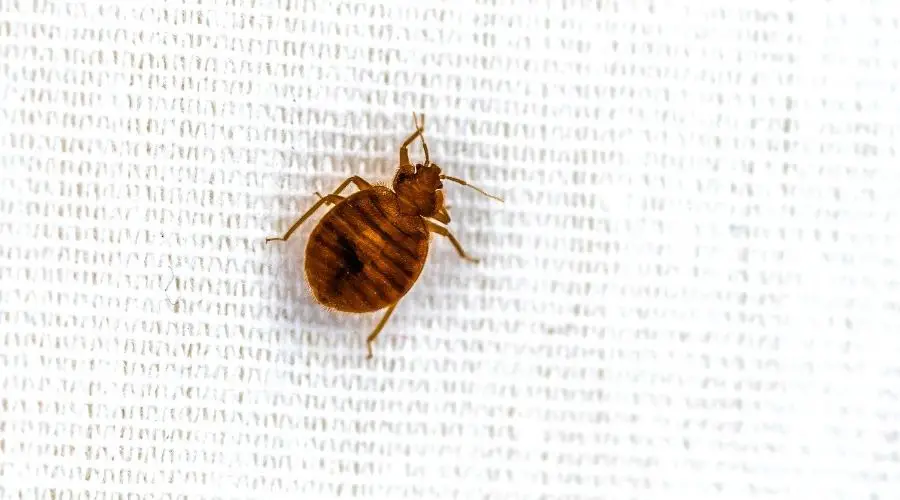
Getting Rid Of Bed Bugs From The Room And House
Examine The Whole House For Bed Bugs
If you find a bed bug, check the whole house for signs of spread. Concentrate on the rooms where people spend the most time, such as the bedrooms and living room. Bed bugs are drawn to carbon dioxide emissions from potential hosts, so they are not likely to be found in your attic or basement (unless you have turned these into living areas).
Check the house carefully. Bed bugs hide and are mostly active at night, so concentrate your efforts on potential hiding spots and try searching at night as well as during the day. If you find a bed bug, that room needs to be treated.
If you clear a room, that is, if you can’t find any trace of bed bugs, try to keep it closed while treating the other rooms. You can even seal it up with tape or a pesticide barrier because bed bugs may flee into these clean rooms when you attack the infested rooms. Additionally, you must move no items from an infested room into a clean space until you are 100% sure no bed bugs are lurking in them.
In each room where bed bugs have been sighted, you need to separate the treated items from the untreated items to prevent re-infestation, especially if the extermination process takes a few days, depending on the size and number of infested rooms.
As mentioned earlier, getting rid of bed bugs is an arduous task. If you have never spring-cleaned, you will now.
Throw Away Items That You Can
It would be best if you discarded whatever items you could throw away. Please start with the actual junk (we all have it lying around our rooms), then purge your house of all the stuff you have wanted to get rid of or are unsure about keeping. These items should be sealed into plastic bags and thrown out.
Washable Items
In addition to the bedclothes and bed accessories, other items can be put in the washer and dryer (the high heat rule still applies for effectiveness!). Floor mats, clothes, curtains, throws, tablecloths, etc., should all be bagged and treated as you treated the bedclothes.
Steam-clean the sofas, carpets, and other fabric items that you cannot put into the wash, such as tapestry wall hangings, material-lined dresser drawers or trunks, padded chairs, etc.
Toys or other items that you can wash (but not in the machine washer) should be bagged and removed to the bathroom or laundry room—clean these items with hot water and soap.
Items That You Can’t Wash
There will be items like books and electronics that you can’t wash. Whichever of these items that you need urgently should be physically and individually examined for bed bugs.
If you don’t need these items for the next 2-5 months, seal them into plastic bags and leave them like that for 2-5 months. This will deprive the bed bugs of food for long enough to kill them.
You can also effectively kill bed bugs by putting the sealed bags into a 0 °F freezer for 1-4 days. Ensure that you only freeze items that these low temperatures won’t damage.
Pesticide Treatment Of Bed Bugs
As mentioned, pesticides may cause the bed bugs to flee into other house areas. There are two ways to try to prevent this.
- First, use kill-on-contact pesticides and pesticide dispersal techniques.
- Second, before treating the room, create a barrier of pesticide (a line of powered or liquid pesticide) at the doors, windows, and vents.
All pesticides are potentially toxic to humans and pets, so careful heed should be paid to all directions provided by the manufacturer on the safe use of their product.
The EPA has over 300 registered pesticides for use against bed bugs! These are grouped into seven categories:
- Pyrethrins
- Pyrethroids
- Desiccants
- Biochemicals
- Pyrroles
- Neonicotinoids
- Insect growth regulators
Pyrethrins & Pyrethroids:
Pyrethrins are naturally derived from Chrysanthemums, a type of flower. Pyrethroids are synthetic copies of pyrethrins. You can use them to flush bed bugs from their hiding places and kill them. However, these pesticides are commonly used and have been used for many years, resulting in resistance to these chemicals exhibited by certain strains of bed bugs.
Using pyrethrins or pyrethroids on resistant bed bugs may cause them to spread to clean areas of the house, repelled but not killed by the pesticides. Pyrethrins and pyrethroids act on the voltage-gated sodium channels of the bug’s nervous system and cause paralysis and death.
Desiccants:
Boric acid powder and diatomaceous earth are the most common examples of desiccants. They act by breaking down the protective outer coating of a bed bug. Bed bugs without this waxy protection will dry out and die. Desiccants are kill-on-contact pesticides and can be used effectively in cracks and crevasses where bed bugs hide. It is inadvisable to cover a room in a desiccant powder. It is messy and ineffective when used in this manner, but it also becomes more of a risk for inhalation toxicity with excessive use.
Biochemicals:
The only biochemical that can and should be used on bed bugs is cold-pressed neem oil, which has shown to be effective against all stages of a bed bug’s lifecycle.
Pyrroles:
The only pyrrole that can and should be used on bed bugs is Chlorfenapyr, which disrupts the normal functioning of a bed bug’s cells.
Neonicotinoids:
These chemicals are synthesized to mimic nicotine, which hurts the nervous system of bed bugs.
Insect Growth Regulators:
These chemicals trigger too rapid growth in bed bugs or halt development.
Except for desiccants, these pesticides mostly come in spray or aerosol, which you should apply to potential bed bug hiding spots as per the instructions. Foggers are available, but their effectiveness is limited because they do not reach all the cracks, crevasses, and other hiding places. Remember, these pesticides have to contact the bed bugs to kill them.
As these different pesticides act on the bed bugs differently, the best approach is often combined. But don’t mix all the sprays and hose your room down. These are chemicals that can interact in very unpleasant ways. Speak to someone at your local pest-control store and ask for their advice on using multiple pesticides together.
Eliminate Preferred Bed Bug Hiding Places
Bed bugs hide in cracks and crevasses in walls, floors, ceilings, and furniture. Seal these holes with the appropriate material (caulk, glue, plaster, wood putty, etc.). Glue down any wallpaper sections that have come up and provide bed bugs with a good hiding spot. Additionally, clutter underneath your bed provides numerous hiding places for bed bugs, eliminating clutter.
Use Heat Solution With Propane Heaters
The best way to get rid of bed bugs is through heat, especially if you want a more natural alternative route. Many professionals use heat treatment because it is highly effective. The heat works by radiating itself into linens and fabric items like chairs, couches, and mattresses. The warmth is in the smallest areas, whereas other treatments do not have this luxury.
A heating treatment is done in two ways: with a professional’s help or by propane heaters, which you can do yourself. It is relatively easy to rent one or two propane heaters from Uhaul.
When using a heating treatment, you will increase the house’s temperature to extremely high temperatures of 135 to 145 degrees. This is because bed bug eggs can live in 125-degree temperatures, whereas adults can survive in 119-degree Fahrenheit. Depending on your household needs, this treatment should last between 3-8 hours, and you will typically not need a follow-up treatment.
Repeat As Needed And Prevent Future Infestation
Bed bugs are challenging to exterminate permanently. One treatment is often not enough unless you had a minor infestation. Monitor previously infested furniture and rooms in the weeks and months following treatment one. You must repeat the process as soon as you find evidence of a bed bug.
As they are so challenging to eradicate permanently, preventing bed bugs from entering your home is vital. It is wise to be wary of hotels, motels, lodges, etc., where you stay. Be careful about bringing furniture, carpets, and clothing into your home that was used by someone else as well. Even newly purchased items can carry a bed bug or two. Make sure you properly inspect and wash new additions to your home. Shared laundry areas are also risky.
Bed bugs are not something about which you should be ashamed. If you find bed bugs, clean and treat your home before you have guests over and let the guests know about it so they can be cautious. Don’t hide the fact that you have bed bugs, as this can perpetuate the spread.
You should also let your neighbors know if you live in a communal home or block of apartments. If you wish to remain anonymous, inform your landlord and ask them to let the other tenants know.
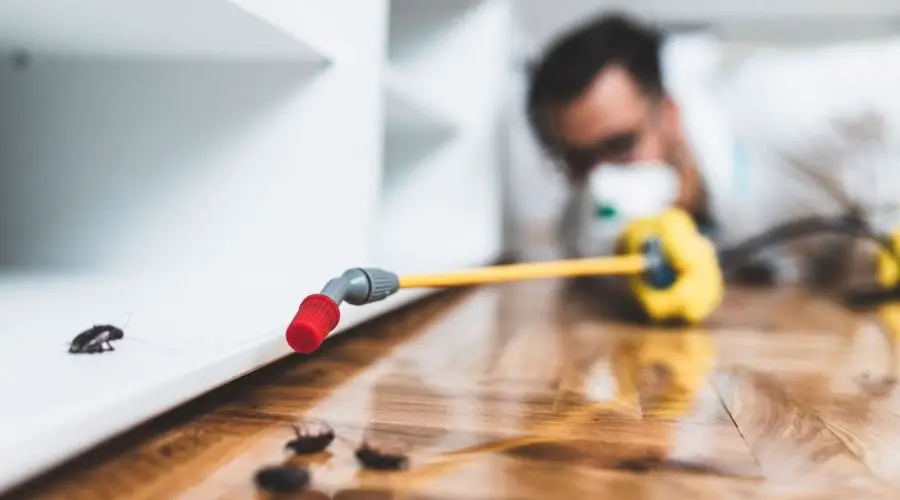
Call In The Professional Bed Bug Exterminators
If you are overwhelmed, freaked out, or your best efforts are not working, don’t hesitate to call the professionals. They have knowledge, methods, and tricks that a layperson does not have available to them.
What Makes Bed Bugs Bad?
Unlike many other pests, bed bugs don’t often carry and transmit diseases and don’t have harmful venom that can act on their host. However, this doesn’t mean they are harmless and should be ignored. Not only are they psychologically upsetting, but some people can be allergic or become sensitized to the bed bug’s saliva resulting in allergic responses. The bite spots may swell and become aggressively itchy, or a person may develop a rash or hives.
Another major issue with bed bugs is that they breed rapidly and indiscriminately in your home. Each bed bug female can lay up to 500 eggs in her lifetime! Furthermore, incestual mating among bed bugs is not innately avoided and causes no genetic unsoundness in the offspring. This means that a single pregnant female brought into your home with your luggage or a new piece of furniture can produce a prolific infestation within a relatively short time.
Conclusion
If you discover that you have bed bugs, don’t panic, and don’t be embarrassed. Bed bugs are not associated with dirty homes or a low standard of hygiene. Yes, they can thrive in clutter, but that is not what draws them.
If you discover small red dots on your skin in the morning, you should check your mattress and the areas surrounding your bed for bed bugs. They hide in small, dark places, so concentrate your efforts on these. You must prepare for an intensive treatment regime if you find a bed bug. Either you will have to do this yourself, or you will have to work in tandem with an exterminator company.
Your whole house will have to be examined for bed bugs, and the rooms where these pests are seen will have to be treated. Methods of extreme heat, extreme cold, pesticides, and isolation of bugs from their food source will need to be used to kill off the bed bugs in your home.
Getting rid of bed bugs is difficult, especially when the infestation is advanced. To permanently rid yourself of these pests, you must take them seriously. Let your stubborn side take control and fight until you win.
Get FREE quotes from licensed pest control technicians in your area today. Whether you need spraying for ants, roaches, spiders, ticks, mosquitos, or bed bugs, We Can Help! All technicians are screened, licensed, and insured.


